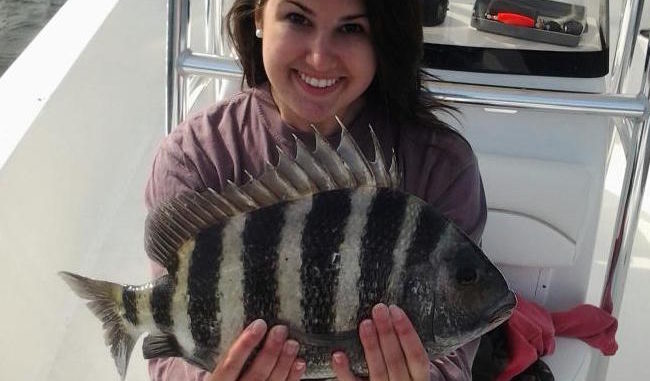
Fripp Inlet rocks and jetty fill with fish
Sitting in a johnboat along a rock wall in Fripp Inlet, Billy Downer of Manning looked at John Long of Lady’s Island and explained, “I think it’s my rod. Maybe I can’t catch them because of my rod.”
Long grabbed the rod from Downer, immediately set the hook said, “It’s definitely not the rod,” and reeled in a nice sheepshead.
“The tide is coming in, and this place is crawling with sheepshead. You’ve just got to recognize what a sheepshead bite feels like” he said.
June is a great month for catching sheepshead around Fripp Inlet, especially on the incoming tide, and Long has a few places picked out where he expects to catch sheepshead.
“You can catch sheepshead just about year-round here, but they really stack up in late May and all through June. If the water temperature is at least 70 degrees — and it usually is by June — then the sheepshead are going to be here,” Long said.
From the Russ Point Boat Landing on Hunting Island, Long crosses under the Fripp Inlet bridge, then immediately heads to the right bank of Fripp Inlet. This bank is covered in large boulders that lead down into the water, below which they are covered in the barnacles to which sheepshead are so attracted.
Long will work down the wall of rocks, jigging fiddler crabs as close as he can get to the rocks. He generally uses a 1-ounce sinker on a Carolina rig with a 3/0 hook. He admits that some folks think such a big sinker is too large, but he has a different take on it.
“The weight can make it hard to detect a bite, but only if you don’t know what the bite feels like. I think the sinker gets the bait to settle in place more quickly, and that helps me detect the bite. Some guys catch plenty of sheepshead while using very small split-shot, and I have nothing against that, but for me, the 1-ounce sinker works best,” he said.
A small jetty protrudes out from the corner of Fripp Island, and that’s another spot where Long finds sheepshead. The rock wall leads directly to the jetty, and anchored at that jetty is where he really wants to be as the tide comes in.
Anchoring is key, and Long does it by tossing an anchor out the front of his boat, allowing the boat to settle with the tide, then tosses a plastic boat bumper into the rocks. Next, he adjusts his anchor rope, and pulls himself in tight to the rocks with the rope on the boat bumper.
“You want to be as close to the rocks as you can get, and I don’t mind scraping up against them from time to time, because I know some days that’s what it takes to get on the fish,” he said.





Be the first to comment